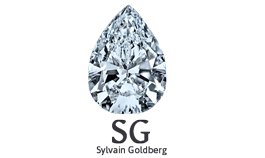Myths about the diamond industry, especially among consumers, are some of the hardest to debunk. Here, leading experts correct some common misconceptions about diamonds.
Myth 1: Customers are significantly at risk of buying a conflict diamond
Reality: Perhaps the most pervasive myth of all, the issue of conflict diamonds — or “blood diamonds” — has a firm grip on the public consciousness.
“Our industry has made great strides since the widespread awareness that came to light during the brutal civil wars in Sierra Leone and Angola in the 1990s,” says Don Palmieri, president of the Gem Certification & Assurance Lab (GCAL). The percentage of the global diamond trade funding or facilitating conflict at that time is up for debate, with estimates ranging from less than 1.5% to as much as 15%. But since the introduction of the Kimberley Process (KP) certification scheme and the World Diamond Council (WDC) System of Warranties, more than 99.8% of the world’s diamonds are certified conflict-free, with the support of 81 countries.
As such, the industry is extensively self-regulated, and various countries have additional layers of government regulation in place. The UK’s Government Diamond Office, for example, works closely with HM Revenue & Customs, the European Commission and civil groups to combat illicit diamonds.
Voluntary and self-regulation systems are effective in maintaining the diamond pipeline, explains Ronnie VanderLinden, president of the Diamond Manufacturers & Importers Association of America (DMIA). As an example, he points to the Diamond Source Warranty Protocol developed by leading US organizations.
“We have systems in place to ensure those doing business have the confidence to know that their source of supply is conflict-free. There are also those that subscribe to the Responsible Jewellery Council, De Beers’ Best Practice Principles, and the Signet Responsible Sourcing Protocol,” he adds.
Myth 2: The diamond industry is a monopoly
Reality: “The perception exists that De Beers still controls the market and controls prices, when this hasn’t been the case for decades,” says Adonis Pouroulis, chairman of Petra Diamonds. “In fact, Petra still gets asked if we sell our diamonds to De Beers.”
This myth is rooted in history, harking back to late 1980s. At that time, De Beers did indeed control over 90% of the supply chain and was almost wholly responsible for marketing diamonds, having developed its famous “A Diamond Is Forever” slogan in the 1940s. This also led to the perception that De Beers “invented” the diamond engagement ring, when in fact the first was recorded as early as 1477.
By the 1990s, the market for new mining companies opened, breaking the hold that De Beers and Alrosa had on the industry and ushering in a new wave of diamond discoveries in Angola and Canada, according to Pouroulis.
David Johnson, senior manager of media and commercial communications at De Beers, adds that his company’s share “was around 35% of global supply by value Myth 3: Diamond mining takes from the environment and gives nothing back Pouroulis adds that “diamond mining tends to have a much smaller footprint, as our orebodies are vertical, not horizontal [and therefore affect less of the surrounding area]. In Petra’s case, we have established protected habitats adjacent to our operations, totaling 10,255 hectares, to ensure preservation of fauna and flora.” For many companies, these preserved land areas are larger than the mining operation itself. The De Beers Group conserves 164,000 hectares of land, five times the area disturbed by its mining activities. De Beers is “also leading a ground-breaking research project that aims to deliver carbon-neutral mining at some of our operations in as few as five years,” Johnson comments. “Scientists estimate that the carbon storage potential of kimberlite tailings produced by a diamond mine every year could offset up to 10 times the emissions of a typical mine.” In Australia, Rio Tinto’s Argyle mine draws more than 92% of its power needs from the hydroelectric Ord Hydro power station, and the company has reduced its diesel consumption by 21%. Overall, the industry has made huge strides in water recycling and waste reduction, and has introduced comprehensive mine closure plans and tree-replanting programs. Myth 4: Diamond mining communities are mistreated and at-risk Misunderstandings of the situation start at a basic level, with many still presuming miners are extracting diamonds by hand. “People don’t understand that diamond mining is a highly automated process, moving millions of tons of rock per year. Miners operating large earth loaders in open pits or underground would never even see a diamond,” says Pouroulis. Consumers also underestimate how much the diamond mines help strengthen the community. Petra, for instance, spent $8.5 million on training in fiscal 2017 and doubled its social spending to $3.4 million in the same period. On a national and global level, says Palmieri, “remote mine discoveries have brought badly-needed foreign exchange to countries and have allowed legitimate governments to educate and provide modern-day medicines and medical facilities to their people.” For example, 33% of Botswana’s GDP comes from diamond mining, and an estimated five million people globally have access to health care thanks to diamond revenues, according to diamondfacts.org. Myth 5: The whole industry is secretive and closed to outsiders Reality: The high-value nature of diamonds has fostered a presumption that the industry is riddled with inaccessible people and organizations, more comfortable with secrecy than transparency. But in fact, says Palmieri, “there are a lot of very hard-working people spread out across the globe who are anywhere from struggling to well-off, to rich and wealthy, depending upon how they have built their businesses and the effects of a six-year decline in prices of polished diamonds.” Public attitudes toward transparency have also had an impact on the industry, according to Johnson. “Society now expects to see businesses reporting on their social activities, and regulators, financiers and other stakeholders increasingly require transparency in corporate structures and financial reporting so they can be confident that companies are acting properly. As such, we have seen a major change in the diamond sector,” he says. Contributing to the secrecy myth is the belief that diamond companies are hoarding mountains of stones, although this, too, is an inaccuracy, Pouroulis notes. “Some people still think De Beers is sitting on huge stockpiles of diamonds in vaults in London, whereas in fact there are no significant stockpiles of diamonds nowadays,” he explains. “Yes, diamond miners all have diamond inventory, but this is generally as per the normal course of business as we build up inventory before making a sale.”
Reality: “Diamond mining is generally less harmful to the environment than other types of mining, because less or no chemicals are used, which can otherwise be harmful to the staff’s health,” says Tobias Kormind, managing director of leading European retailer 77Diamonds.com.
Reality: “Unlike almost any other industry, mining builds communities and a sense of belonging, none more so than in diamonds,” says Kathy Chappell of Fair Trade Gems, who was recently named ethical-issues adviser to the London Diamond Bourse (LDB). The isolated nature of diamond mines means the workforce lives close by and develops a community spirit, which the diamond industry supports by investing in hospitals, schools, training and bursary programs.







